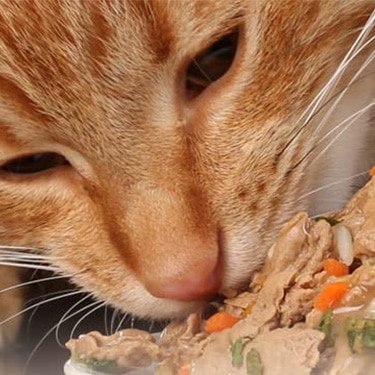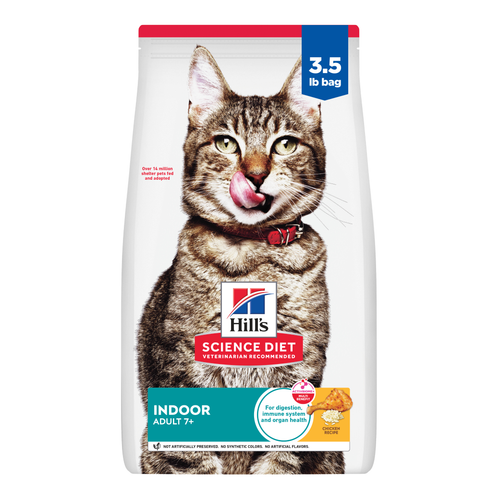
-
Find the right food for your petTake this quiz to see which food may be the best for your furry friend.Find the right food for your petTake this quiz to see which food may be the best for your furry friend.Featured products
 Adult Large Breed Chicken & Barley Recipe Dog Food
Adult Large Breed Chicken & Barley Recipe Dog FoodSupports healthy joints, lean muscle, and beautiful coat for large breed dogs
Shop Now Adult Chicken & Barley Recipe Dog Food
Adult Chicken & Barley Recipe Dog FoodSupports lean muscle and beautiful coat for adult dogs
Shop Now Hill's Science Diet Adult Chicken & Beef Entrée Dog Food
Hill's Science Diet Adult Chicken & Beef Entrée Dog FoodChicken & Beef Entrée in a delicious loaf with complete & balanced nutrition to help keep adult dogs active and healthy
Shop NowFeatured products Adult Tender No Corn, Wheat, Soy Chicken & Vegetables Stew Cat FoodShop Now
Adult Tender No Corn, Wheat, Soy Chicken & Vegetables Stew Cat FoodShop Now Senior Vitality Adult 7+ Tuna & Vegetables Stew
Senior Vitality Adult 7+ Tuna & Vegetables StewImproves Everyday Ability to Get Up & Go
Shop Now Adult Turkey & Liver Entrée Cat Food
Adult Turkey & Liver Entrée Cat FoodPrecisely balanced nutrition with the delicious taste of minced turkey & liver to help fuel the energy needs of cats during the prime of their life
Shop Now -
Dog
- Dog Tips & Articles
-
Health Category
- Weight
- Food & Environmental Sensitivities
- Urinary
- Digestive
- Joint
- Kidney
-
Life Stage
- Puppy Nutrition
- Adult Nutrition
- Senior Nutrition
Cat- Cat Tips & Articles
-
Health Category
- Weight
- Skin & Food Sensitivities
- Urinary
- Digestive
- Kidney
-
Life Stage
- Kitten Nutrition
- Adult Nutrition
Featured articles How to Properly Mix Wet & Dry Pet Foods
How to Properly Mix Wet & Dry Pet FoodsAn Orange cat eating from a bowl filled with mixed food
Read More The Science Behind Our Love for Pets
The Science Behind Our Love for PetsLearn the scientific reasons why we have such strong connections with our pets, and what science says about the love between humans and our furry friends.
Read More What Is Littermate Syndrome? Pet Adoption Guide
What Is Littermate Syndrome? Pet Adoption GuideLearn more about littermate syndrome in dogs and cats and how to successfully navigate adoption and early socialization processes.
Read More -


I, for one, love cat toys. Living a life of luxury appeals to many domesticated cats, including sleeping on a cozy couch or being fed on demand by their pet parent. But despite the overwhelming evidence, cats aren't wired to laze around the house all day. Introducing your furry friend to interactive cat toys, including cat toys that dispense food, is an optimal way to keep them mentally sharp and physically agile.
The Importance of Interactive Cat Toys
Multifaceted toys are popular because they present a challenge and appeal to hunting instincts. They reduce unwanted behavior toward people (biting your hands and feet) and rough-housing with other household pets, says the American Association of Feline Practitioners. Enrichment play reduces boredom — bored cats quickly become mischievous cats — and stress, which is a win-win situation for all of you.

Sedentary cats are prone to health issues, including arthritis, diabetes and obesity. So what better way to get them off the couch than with toys that keep your cat moving and grooving?
Cat Food Puzzles and Dispensers
Cat toys that dispense food are some of the more popular interactive toys because they're intriguing and provide treats! Cat food puzzles range from simple to complex, from DIY to commercially available, including a plastic container with holes filled with a portion of kibble that your cat can bat around until they "catch" the food that falls out. A cardboard box with holes works well, too. Some food-dispensing devices are stationary mazes, much like a board game for cats, or spiral towers (sometimes called cat food trees) where the food rolls down a chute.
The Journal of Feline Medicine and Surgery notes that the benefits of food puzzles "include weight loss, decreased aggression toward humans and other cats, reduced anxiety and fear, cessation of attention-seeking behaviors and resolution of litter box avoidance." Creating a harmonious, stress-free environment contributes to the well-being of you and your kitty.
Cat Teaser String Wands
Cats love interactive "teaser" wands, essentially a fishing-pole-style stick with feathers or a small stuffed toy tied to the end. Your feline friend is a natural-born predator, drawn to toys that skitter, rustle and fly, so they love this challenge of stalking, jumping and pouncing. This activity enhances your cat's athletic agility and stimulates their hunting instincts. Wand toys also build your cat's trust in you because you're helping them forage for "food."
Be sure not to take the "teaser" part literally, however. Teasing is stressful for a cat, so allow your cat to catch their prey to satisfy their instinctive predatory behavior.


Tasty Tips
Mechanical Robotic Animals
It's not science fiction: Robotic mice, fish and birds are taking over the world — the cat toy world, that is. With life-like action and unpredictable movements, these critters resemble the real deal and boost your cat's confidence in their hunting abilities. "Studies have found that adult cats show more intense and prolonged play with toys that resemble actual prey items," says International Cat Care. Mechanical "prey" provides indoor cats with the hunting enrichment they need while keeping them safe from outdoor predators (and wildlife safe from cats).
Balls and Ball Towers
Although balls don't replicate the appearance of a cat's natural prey, their movement expertly mimics that of a small animal. A free-rolling battery-powered or rechargeable "smart" ball or a disc-shaped ball tower with tiered tracks are examples of ball toys that provide mental and physical stimulation. Because cats bite and nip while playing, you can protect yourself by tossing a ball across the room to redirect your cat's instinctive behavior toward the toy instead of your ankles.
Many cat toys only should be used during supervised play, advises Best Friends Animal Society, because cats can ingest the strings, feathers, cords and other potentially dangerous materials. If your cat ingests a foreign material, immediately contact your veterinarian or an emergency vet. When not in use, store the toys in a cat-proof spot.
Remember, you can be a part of your cat's playtime! Interactive cat toys are a terrific addition to the many fun things to do with your cat at home. Engaging in enrichment playtime with your kitty deepens your bond and your love for each other.


Christine O'Brien is a writer, mom, and long-time cat parent whose two Russian Blues rule the house. Her work also appears in Care.com, What to Expect, and Fit Pregnancy, where she writes about pets, pregnancy, and family life. Find and follow her on Instagram and Twitter @brovelliobrien.
Related products


Supports energy level and beautiful fur in mature indoor cats

Improves Everyday Ability to Get Up & Go

Precisely balanced nutrition with the delicious taste of minced turkey & liver to help fuel the energy needs of cats during the prime of their life
Related articles

Discover how to train your cat, starting with very basic first steps that both reward good behavior and discourage the bad.

Learn how to litter train a kitten with this guide to potty training, including when to start litter training kittens and troubleshooting tips.

When you adopt a cat, you don't just gain a best friend; you also save her life. Here's why getting a cat from a local animal shelter makes so much sense.

Discover which cat toys games your feline friend might like, and how they are great sources of exercise. Explore our library of articles to learn more.

Put your cat on a diet without them knowing
Our low calorie formula helps you control your cat's weight. It's packed with high-quality protein for building lean muscles, and made with purposeful ingredients for a flavorful, nutritious meal. Clinically proven antioxidants, Vitamin C+E, help promote a healthy immune system.
Put your cat on a diet without them knowing
Our low calorie formula helps you control your cat's weight. It's packed with high-quality protein for building lean muscles, and made with purposeful ingredients for a flavorful, nutritious meal. Clinically proven antioxidants, Vitamin C+E, help promote a healthy immune system.


